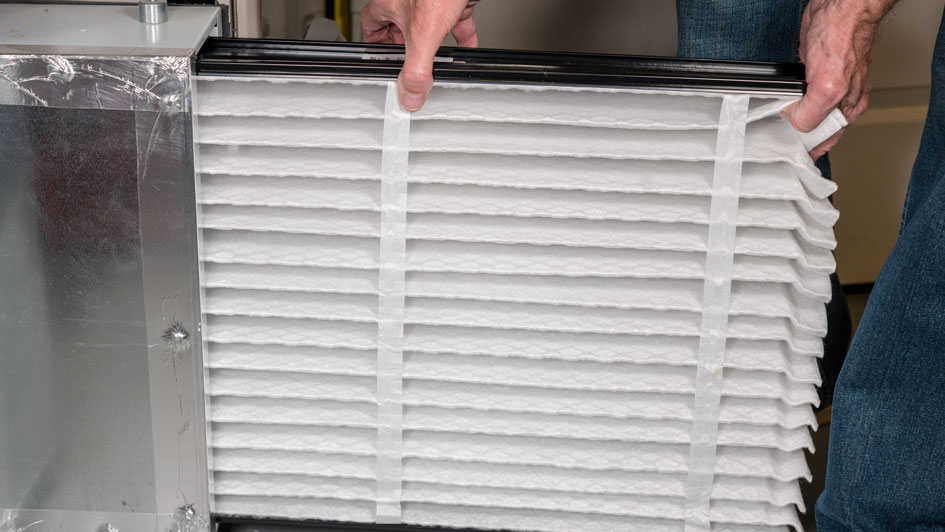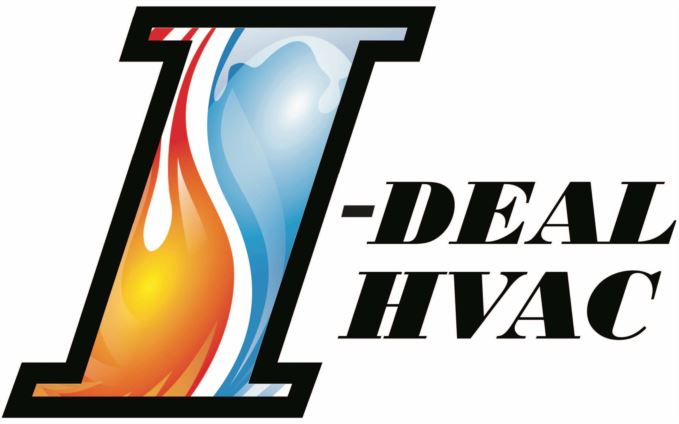
Choosing the proper furnace filter and changing it when it is dirty is as important to your HVAC system as changing the oil is to your car. Each plays a vital part in keeping its system operating safely, efficiently and for a long time.
A clogged furnace filter loses its effectiveness, allowing potentially harmful particles to move through your home. It also slows airflow, which can damage your furnace and reduce its life span.
Ensuring your furnace uses a clean filter that is suitable for your needs is not only about keeping your furnace working efficiently. It’s also about delivering healthy indoor air quality for your household.
The health of your family is important to the HVAC specialists at I-Deal HVAC. We've long focused on improving indoor air quality in Albuquerque. Here, we’ve answered frequent questions about HVAC filters, including that particularly tricky question of what direction do you point a filter in your furnace or air conditioner?
When Should I Replace My Furnace Air Filter?
It's important to replace dirty air filters in a furnace or air conditioner routinely. Dirt-clogged filters cause the system to worker harder than it should because it takes extra work to move air through the plugged-up filter.
Officials suggest examining your furnace filter every 30 days and replacing it if it’s dirty. You’ll know if it is dirty because it will coated with dirt or dust. Those who have dogs and cats will likely want to replace their furnace air filter more often, because an effective air filter will trap pet hair circulating in a home.
How to Find the Furnace's Air Filter
In general, a furnace air filter is commonly found in the return air duct or blower compartment before the return air goes back into the furnace. This makes sure air flowing into the system is filtered before it goes through the furnace components and is heated.
Depending on the furnace model, the filter may be located on the right, left, bottom or in some cases, within the furnace. It's usually housed in a slot, frame or cabinet for convenient access and replacement. Always refer to your furnace's owner manual for details regarding filter location of the furnace in your home.
Is a Furnace Filter the Same as an Air Filter?
The simple answer is, yes. In HVAC, a furnace filter and an air filter or air conditioning filter are essentially the same. While they might be called different things based on the current season— summer or winter—they are all filters that clean the air in your HVAC system.
They each get rid of dust, allergens, bacteria and other particulates from the air that is drawn into the furnace and air conditioning system, making sure the air circulating throughout your home is clean and safe.
What Is a MERV Rating and What MERV Rating Do I Need?
Once you locate your old furnace filter and determine when it should be replaced, it’s time to select a replacement. That means deciding on the level of filtration that you need. One way to do that is by selecting an appropriate MERV rating for your needs.
MERV stands for Minimum Efficiency Reporting Values. The MERV rating indicates the effectiveness of air filters at trapping airborne particles. The rating scale ranges from 1 to 20, with greater numbers indicating enhanced capabilities to filter smaller particles.
Experts say a filter with a MERV rating between 8 and 13 offers an ideal balance between having adequate indoor air quality without unnecessarily restricting airflow. However, people with some health conditions could need to use a filter with a higher MERV rating.
How to Place the Air Filter in a Furnace or AC Unit
Positioning an air filter in a furnace or air conditioner correctly is crucial for the efficient operation of the unit. Air filters are designed to be installed in a certain direction, indicated by an arrow written on the side of the filter frame. The filter should be installed with this arrow pointing in the direction of the furnace or AC, which is the direction of the airflow. If you're doubtful about the airflow direction, it may be helpful to remember that air always moves from the return duct to the heat or cooling source. Therefore, be sure that the arrow points in the direction of the furnace or AC.
Many people have difficulty remembering which direction to face an air filter. To help remember, consider taking a picture with your cell phone after the filter has been correctly installed by a professional. Or, you also could ask a technician to use a marker to write on the outside of your furnace which direction the filter should be installed. A great time to do this is during a scheduled furnace maintenance appointment.
Changing Your Furnace's Air Filter
Changing the filter on your furnace or AC is an easy process. Here is a step-by-step breakdown of how to remove a dirty air filter and replace it with a new one:
- Turn off your furnace: Make sure to shut off your furnace before starting the process.
- Locate the furnace filter: Typically, the filter is found in the furnace or in the air return vent. Take note of which direction the arrow points on the filter, because you’ll want the arrow on the clean filter to point the same way.
- Remove the old filter: Be mindful not to knock out any dust or dirt.
- Record the date: Write down the date of replacement on the new filter's frame. This will help you keep track of when it's time for you to change it again.
- Put in new filter: Put in the new filter with the arrow pointing toward the furnace, which is the direction of airflow and should be the same direction the arrow pointed on your last filter.
- Secure the filter: Make sure the new filter fits correctly and close any latches or clips that secure it in place.
- Turn on your furnace: Once the replacement filter is safely in place, you can turn your furnace back on.
Will a Dirty Air Filter Cause a Furnace Not to Work?
The simple answer is, yes, a dirty air filter can cause a furnace to quit working or reduce its lifespan. Changing your furnace or air conditioner filter is one of the easiest things you can do to keep your system working effectively.
